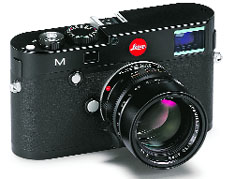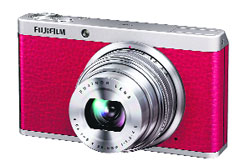The latest range of compact cameras with technical advancements that give you simplicity and precision can tempt even the most serious of professional photographers
Roopinder Singh
 NO serious photographer likes to be caught with one but the overwhelming popularity of point-and-shoot cameras has made democratised photography. Single lens cameras (SLR) are most coveted by professionals, largely because of their ability to accommodate a vast number of specialised lenses. Compact cameras have a built-in lens which often has a zoom lens that covers most of the situations that a photographer is likely to encounter.
NO serious photographer likes to be caught with one but the overwhelming popularity of point-and-shoot cameras has made democratised photography. Single lens cameras (SLR) are most coveted by professionals, largely because of their ability to accommodate a vast number of specialised lenses. Compact cameras have a built-in lens which often has a zoom lens that covers most of the situations that a photographer is likely to encounter.
Another major difference is the way you see the picture. While in an SLR camera, what you see through the viewfinder is the same light that will reach your camera’s sensor when you press the shutter button, a compact camera, uses an electronic viewfinder through which it endeavours to recreate what an SLR viewfinder would see.
Manual vs automatic
SLR cameras give the photographer the ability to manually control various parameters such as aperture, shutter speed, ISO (image sensor), etc. Compact cameras, on the other hand, make it far easier for amateur photographers to take pictures by taking auto decisions on aperture, speed, light conditions, etc and thus allowing the photographers to concentrate on the fun aspects of picture taking, such as composition.
It comes as no surprise that SLR cameras are far more expensive than compact cameras. Naturally, the latter is what sells in large numbers. Given the numbers, top camera companies in the world like Nikon, Cannon, Sony and Leica, have devoted time and resources to improve this genre of cameras and the results were for the world to see at the recently held Photokina exhibition.
Cologne, Germany, plays host to the trade show that draws a crowd of more than two lakh photo enthusiasts and professionals. It is described as the world’s largest imaging show, and is held every two years.
Star of the show
This year the star of the show was the 37.5-megapixel Leica S. This medium-format/DSLR has the same sensor as its predecessor, some improvements in autofocus and buffering capabilities and will cost a cool $21,950 when it hits the market at the end of the year.
Requiring less deep pockets, is also the Leica rangefinder Leica M. This 24.3-megapixel camera can shoot full 1080p HD video and has video and live view; you can attach an optional electronic viewfinder to this $6,950 camera.
Technically advanced
Canon’s latest PowerShots-the G15, S110, and SX50 HS-are alluring. The G15 28-140mm lens is with an f/1.8-2.8 aperture. The $500 camera also has an optical viewfinder. The G15 can shoot at up to ISO 12800. It can also record full 1080p HD video at 24 frames per second.
Fuji presented it Fuji XF1, a premium compact camera with a f/1.8 4x optical zoom Fujinon lens. The 12 megapixel camera has a 25-100 mm lens that retracts into the body, and makes it easy to slip the $ 500 camera into a pocket or purse.
No matter which point-and-shoot camera you pick, technical advance have made them quite good. In fact, even some professional photographers have been using compact cameras.
So go forth and pick up the latest, you will have fun taking photographs while your camera does all the work.
 LEICA M
LEICA M
24.3-megapixel
Video and live view
10x zoom and focus peaking
Full 1080p HD video
An optional electronic viewfinder can be attached
Price: $6,950
 FUJIFILM
FUJIFILM
12 megapixel
Has a f/1.8 4x optical zoom Fujinon
25-100 mm lens
Lens retracts into the body, and makes it easy to slip the camera into a pocket or purse
Price: $500
This article was published in the Trends supplement of The Tribune on October 20, 2012
